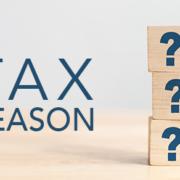New option for unused funds in a 529 college savings plan
With the high cost of college, many parents begin saving with 529 plans when their children are babies. Contributions to these plans aren’t tax deductible, but they grow tax deferred. Earnings used to pay qualified education expenses can be withdrawn tax-free. However, earnings used for other purposes may be subject to income tax plus a 10% penalty.
What if you have a substantial balance in a 529 plan but your child doesn’t need all the money for college? Perhaps your child decided not to attend college or received a scholarship. Or maybe you saved for private college, but your child attended a lower-priced state university.
What should you do with unused funds? One option is to pay the tax and penalties and spend the money on whatever you wish. But there are more tax-efficient options, including a new 529-to-Roth IRA transfer.
Nuts and bolts
Beginning in 2024, you can transfer unused funds in a 529 plan to a Roth IRA for the same beneficiary, without tax or penalties. These rollovers are subject to several rules and limits:
- Transfers have a lifetime maximum of $35,000 per beneficiary.
- The 529 plan must have existed for at least 15 years.
- The rollover must be through a direct trustee-to-trustee transfer.
- Transferred funds can’t include contributions made within the preceding five years or earnings on those contributions.
- Transfers are subject to the annual limits on contributions to Roth IRAs (without regard to income limits).
For example, let’s say you opened a 529 plan for your son after he was born in 2001. When your son graduated from college in 2023, there was $30,000 left in the account. In 2024, under the new option, you can begin transferring funds into your son’s Roth IRA. Since the 529 plan was opened at least 15 years ago (and no contributions were made in the last five years), the only restriction on rollover is the annual Roth IRA contribution limit. Assuming your son hasn’t made any other IRA contributions for 2024, you can roll over up to $7,000 (if your son has at least that much earned income for the year).
If your son’s earned income for 2024 is less than $7,000, the amount eligible for a rollover will be reduced. For example, if he takes an unpaid internship and earns $4,000 during the year from a part-time job, the most you can roll over for the year is $4,000.
A 529-to-Roth IRA rollover is an appealing option to avoid tax and penalties on unused funds, while helping the beneficiaries start saving for retirement. Roth IRAs are a great savings vehicle for young people because they’ll enjoy tax-free withdrawals decades later.
Other options
Roth IRA rollovers aren’t the only option for avoiding tax and penalties on unused 529 plan funds. You can also change a plan’s beneficiary to another family member. Or you can use 529 plans for continuing education, certain trade schools, or even up to $10,000 per year of elementary through high school tuition. In addition, you can withdraw funds tax-free to pay down student loan debt, up to $10,000 per beneficiary.
It’s not unusual for parents to end up with unused 529 funds. Contact us if you have questions about the most tax-wise way to handle them.
© 2024












